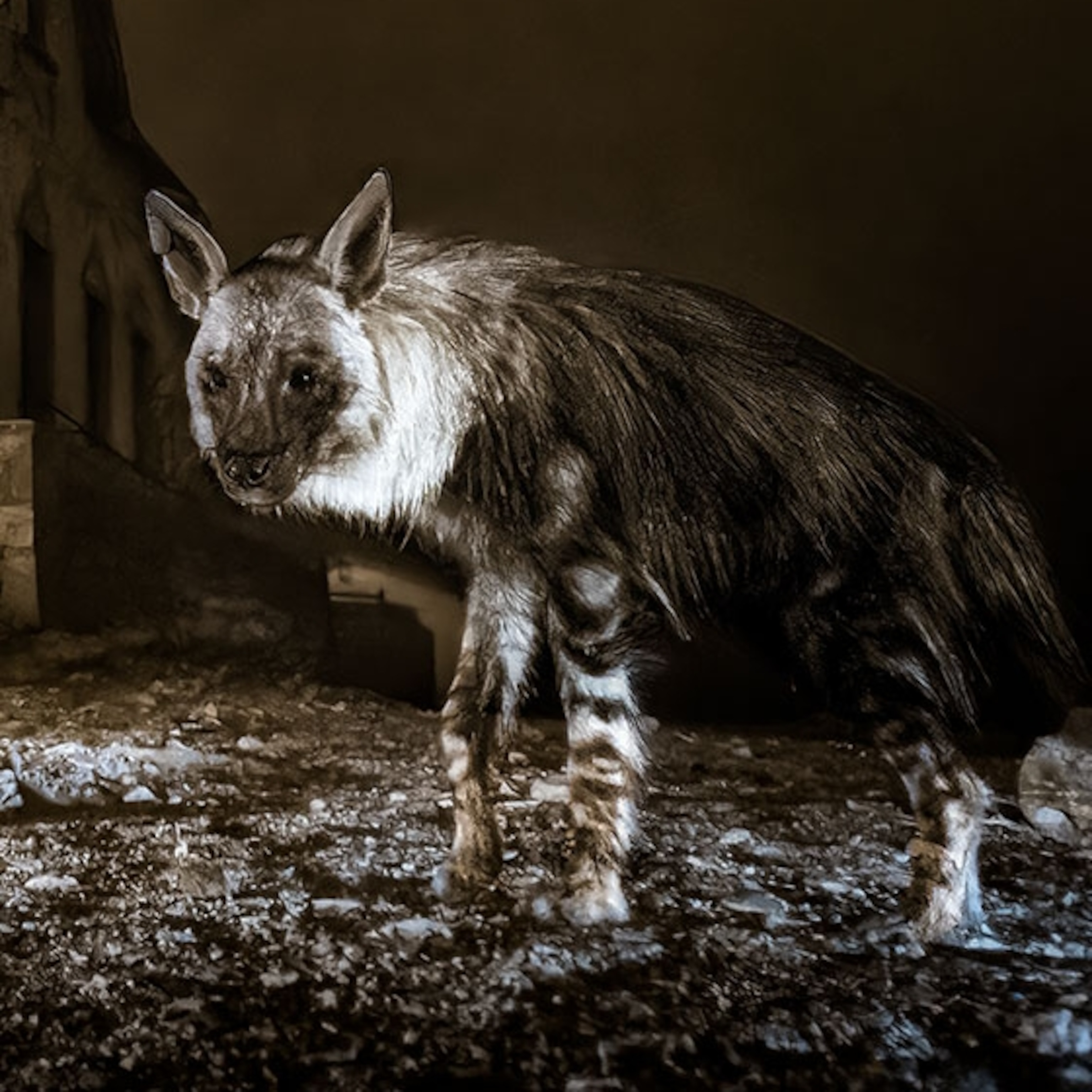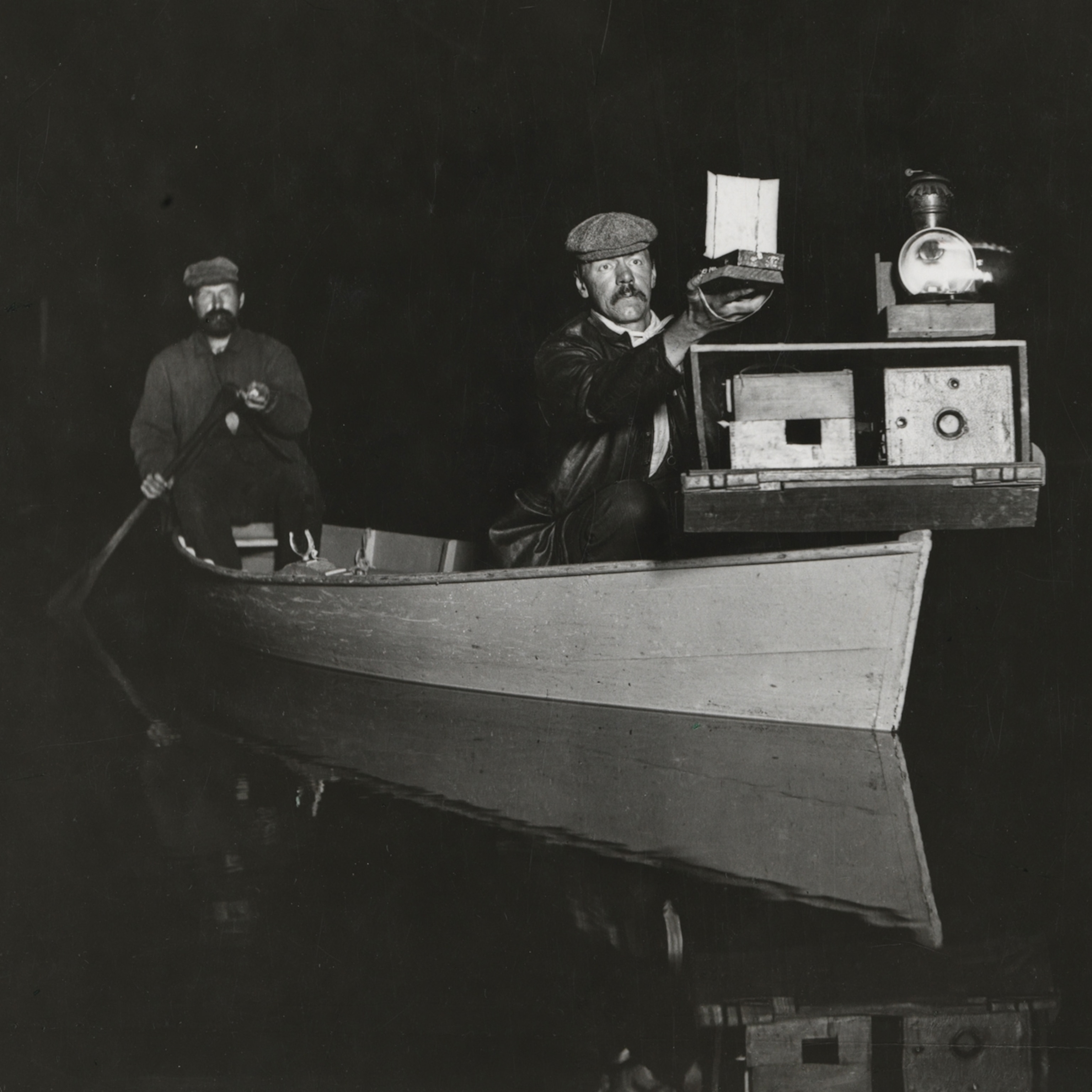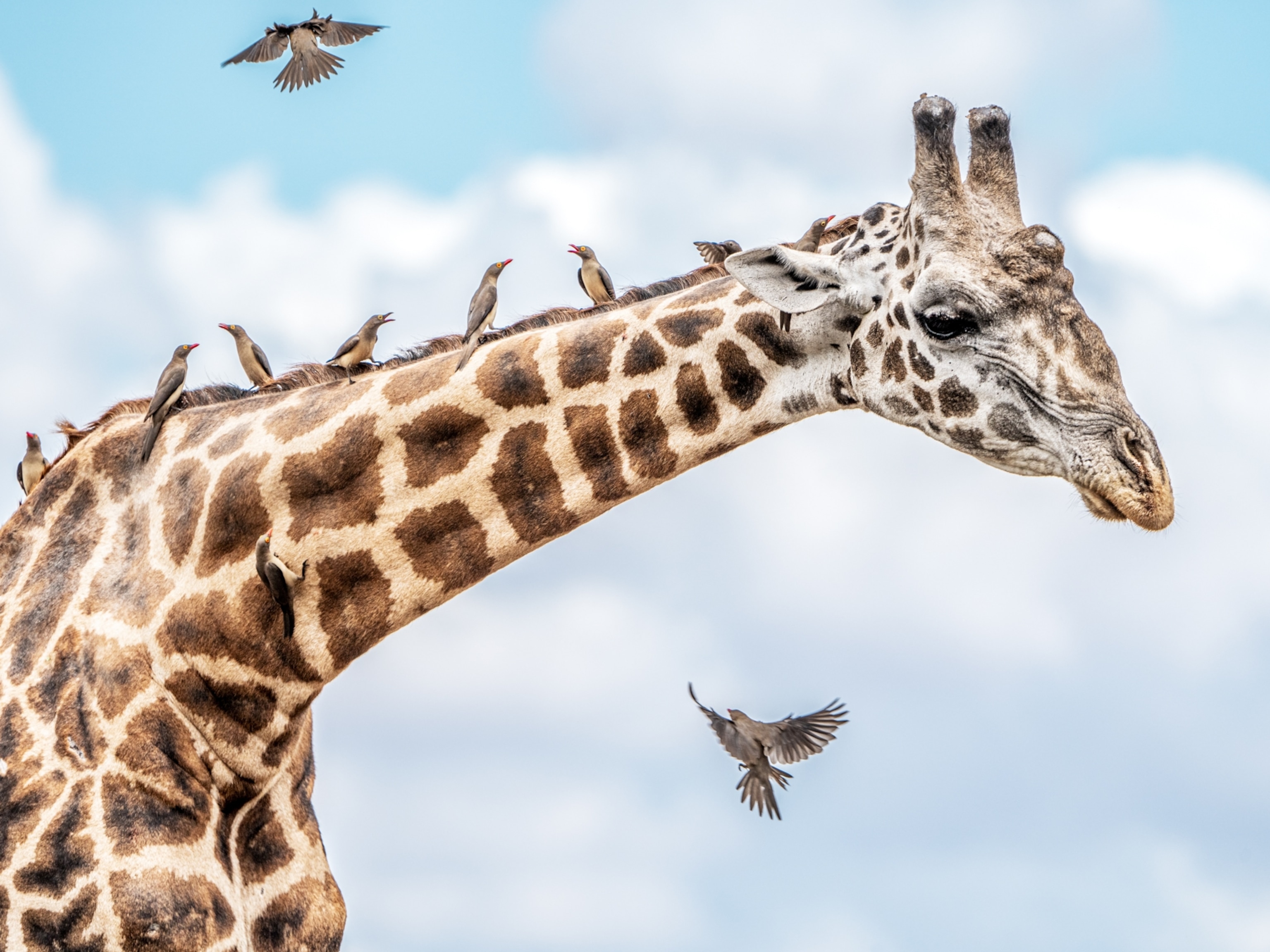
Pictures We Love
National Geographic editors choose the images from 2016 that intrigued, delighted, and moved them.
Sarah Leen, Director of Photography
I love the magical—often mysterious—nature of visual expression. Images are not only about what you see in a photo but also about what you feel. When I first saw this photograph of a Chinese panda keeper, by photographer Ami Vitale for our panda rewilding story, I did a double take. The keeper in the panda suit, the taxidermy leopard with the crazy expression, and the panda paintings on the wall combine to make an image that keeps me coming back for more. It's playful, even funny, but it's also a serious comment on our relationship with wildlife, which is often complicated and sometimes conflicted. For me, it's a layered image holding many emotions; it's delightful, inexplicable, ironic, a tiny bit sad—but ultimately just plain wonderful!

Patrick Witty, Deputy Director of Photography, Digital
Wayne Lawrence traveled to Flint, Michigan, earlier this year for National Geographic to document the water crisis. He met these three siblings collecting their daily allowance of bottled water. This photo is timeless, beautiful, infuriating, and inspiring. Wayne captured a moment that perfectly encapsulates the tragedy, the injustice, and the resilience of a city in crisis. It's a gut punch, a photo that isn't soon forgotten.

Kathy Moran, Senior Photo Editor
I love camera traps because you never know what you might get. The photographer does his homework, sets the scene, and hopes that the magic will happen. For this photograph, the magic took tens of thousands of frames before coming together. Charlie Hamilton James captured the bison carcass, grizzly bear, and swirl of ravens with the dramatic backdrop of the Grand Tetons to anchor the stage. The best part about this photograph is that the photographer was hoping for wolves. What he got instead was a wonderful surprise.

Vaughn Wallace, Senior Photo Editor
Brent Stirton’s image of Anita and Sonia seeing the world for the first time after eye surgery fills me with optimism. 2016 has been a rough year; these sisters’ joy is an antidote to the despair of the daily news. Each glance at this picture encourages me to let peace linger in my heart just a little longer.

James Wellford, Senior Photo Editor
The vast perspective on a world always evolving makes Michael Nichols' picture of the Grand Prismatic Spring mesmerizing. You can rotate the image and consider it from any perspective and find certain beauty. There is something breathing and almost sublime in nature. Like an abstract painting, the forms and palette of color in this picture thrill the eye.

Sadie Quarrier, Senior Photo Editor
After narrowing down my favorite NGM images from 2016 to a small handful—photographs of wonder, beauty, surprise—I keep coming back to the powerful, visceral rawness of Charlie Hamilton James’s vulture image. The scene is intense, and we are shockingly close, literally at the dinner table with this bird as it tears into its meal. The composition is very powerful. I love the strong profile, with one eye and beak coming into the frame on the right, running parallel to the bloody body part. I admit that prior to this story, I had no love for vultures—found them ugly, scary, repulsive. Charlie and the article enlightened me about why we should care about this bird’s purpose in our ecosystem.
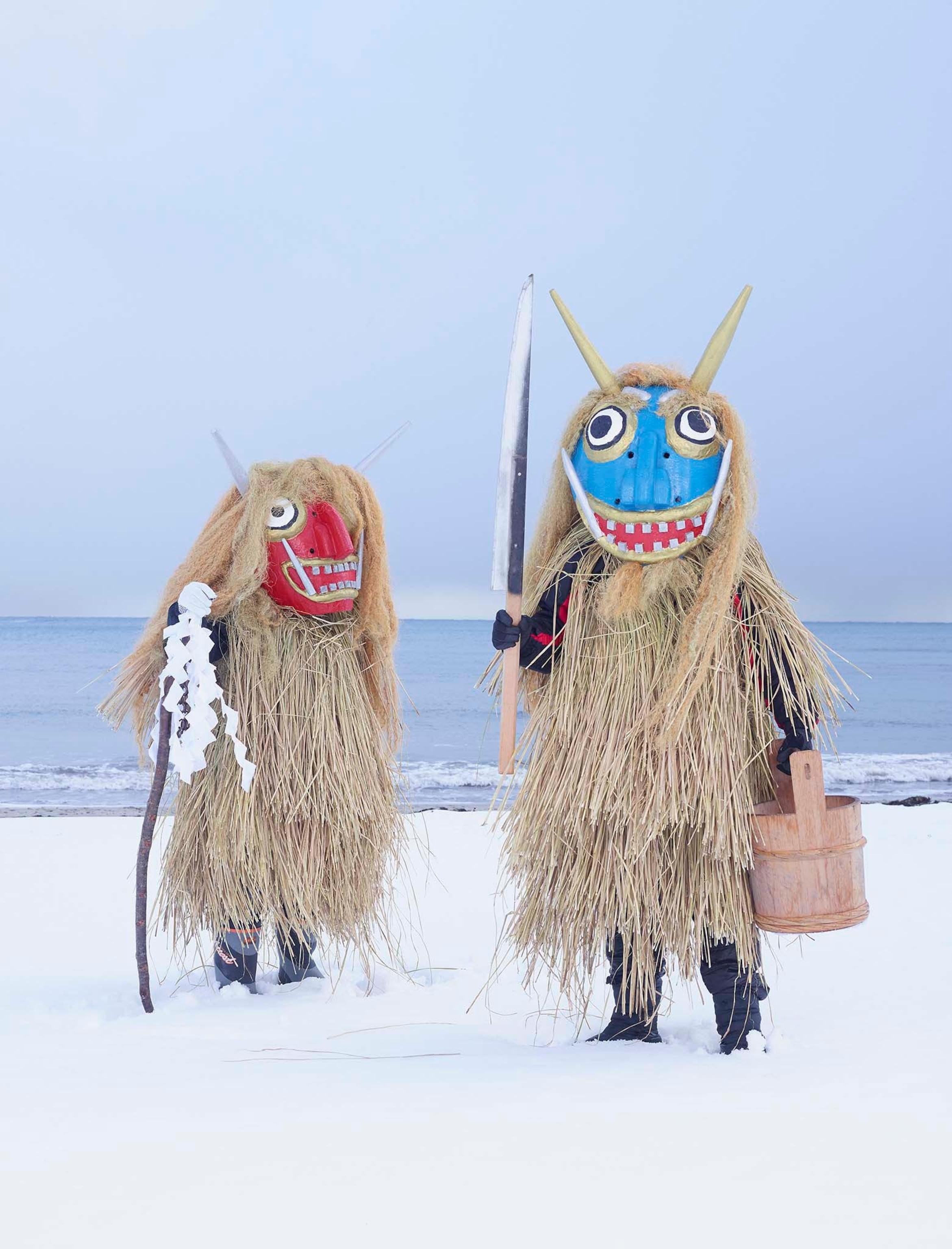
Alexa Keefe, Senior Photo Editor
Charles Fréger's portraits of people dressed in traditional folk costumes posed against the landscape create a world where monsters roam the earth. I interviewed him earlier this year about his new book, Yokainoshima, which focuses on the harvest rituals of northern Japan. I was captivated by the creatures he brought to life, particularly this pair of Namahage—ogre-like deities who descend from the mountains around the New Year to scare villagers, particularly lazy ones who've been spending too much time sitting by the fire. The arcane traditions Fréger highlights remind me of the elemental connection we have to food, shelter, and community—and of our very human capacity for humor.

Nicole Werbeck, Senior Photo Editor
When I got this photo from photographer Adam Dean, it was like Christmas morning. I couldn't stop staring at it. The scene looks like something out of a Mad Max movie.
Every time I scan it, I find something new.
I've never seen someone sledgehammer giant frozen fish. And I never expected to see this work done in those striped pants.
The lighting is magical. It's gritty and dark. I'm transported inside the belly of this ship in the Philippines. I can almost smell the fish and feel the heavy air when I look at it.
I assigned Adam to this piece in late June. I remember how he had to work around approaching cyclones. The first overnight fishing trip was during a fierce storm. The boat he was on was heavily damaged, but fortunately no one was injured. He made it out again the next night on a different boat. I'm still amazed at how he was able to produce such beautiful work despite these obstacles.

Matt Adams, Associate Photo Editor
This image, taken by YourShot photographer Ryan P. Kierkegaard, features a moment that made me stop and take in everything that's happening in the scene. The photograph comes alive in front of you—it's almost as if I can hear the soldier in the bottom right yelling and cheering on his fellow servicemen as they engage in a game of tug-of-war. The composition lets me take in the whole scene, and there are so many different stories happening and things to study. From the expressions of the men and women cheering on the sidelines to the guy holding a battle-ax in the background, these are the types of moments that makes editors pause and look closer during a large edit.
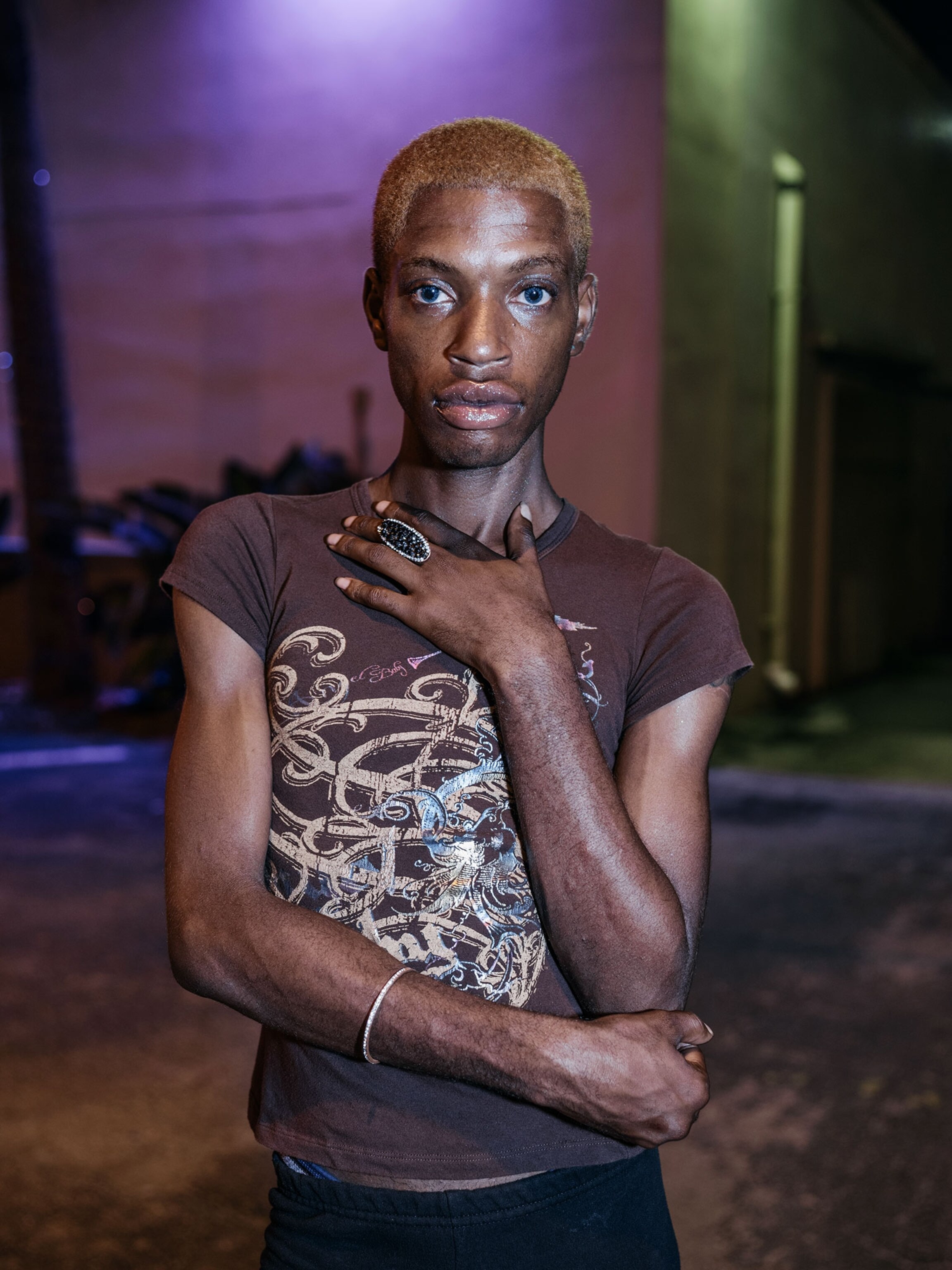
Mallory Benedict, Associate Photo Editor
Some pictures stop you in your tracks and demand your attention. For me, this is one of those pictures. In the days following the Orlando massacre, one of 2016's many tragic events, the LGBT community gathered to support each other after a space they considered safe was attacked and many members of their community were killed. To me, this portrait is striking because, though a quiet and reverent picture, it embodies a spirit of resilience and power.
Wayne Lawrence has a real gift as a photographer and especially as a portraitist. His calm demeanor encourages people to open up to him in a way that they might not to others. For me, this photo is a quintessential symbol of hope and strength for all threatened communities.
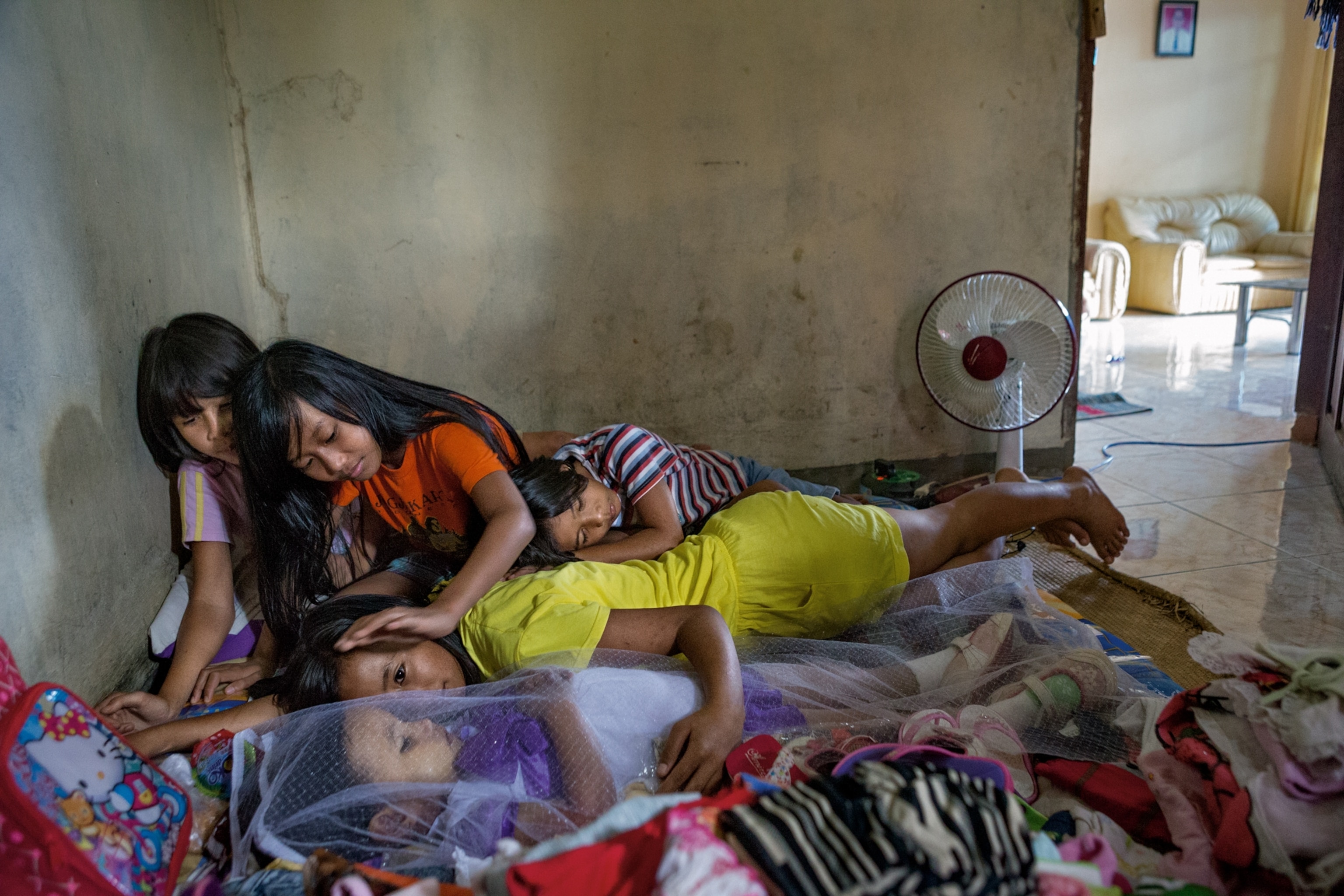
Elizabeth Krist, Senior Photo Editor
We dream about bringing back the dead and keeping loved ones with us after they’re gone. The Torajans in a remote region of Indonesia do not believe that death is an immediate, final separation. They often keep the preserved bodies of family in the house for weeks or months so they can continue to live with them, bringing them food and welcoming friends who come to visit the deceased. Brian Lehmann captured this traditional practice in this image.
Here, the sisters and cousins of Syahrini Tania Tirnanda, who had died the day before, talk to her and caress her. They consider the three-year-old merely sick, and she is still a presence within the household. In the north of Toraja, families open tombs every few years to clean the bodies and redress them. These practices don’t necessarily eradicate grief for the families, but they recast the idea of loss.
In this photograph, it’s the tenderness that strikes me, the calm emotional connection beyond death.

Kurt Mutchler, Senior Photo Editor
Hollywood couldn't have built a better movie set.
Like a kid in a sandbox, University of North Dakota space engineer Pablo de León tests his Mars prototype space suit in the “regolith bin” at NASA’s Kennedy Space Center. The hi-tech testing facility contains fine soils and giant fans that can simulate dust storms on Mars.
When I came across pictures of this glass box inside the warehouse while researching November’s cover story on Mars, I knew I needed to get photographer Phillip Toledano there to take pictures.
Toledano did a spectacular job making this wonderful image with a combination of his impeccable eye and perfect lighting. The image brought a sense of playfulness and ingenuity to our Mars story.
Like many situations for our magazine stories, we couldn’t do it without the support of others. Professor de León was instrumental in helping us make this picture, along with the fantastic crew at the Kennedy Space Center. It's people like this that make our stories possible.

Kaya Berne, Photo Coordinator
This captured moment in Yellowstone National Park is rare. It draws on the grueling demands of survival. Yet, staring back into the eyes of the center wolf, a beauty emerges, along with an incredible amount of mystery. Something has caught the attention of these wolves. For some reason, though, the wolf in the center is focused on us, specifically photographer Ronan Donovan. It makes me wonder what has caused them to pause from their meal, and why one wolf is not in sync. For me, a single photograph that is able to provide a story is powerful. One that leaves room for your imagination to expand that story is even stronger. This image does it all.

Jessie Wender, Senior Photo Editor
I love the playful moment Marcela Taboada captured in this photograph. It's unexpected to see a nun dressed in full habit, in midair, hitting a volleyball over a net! This photograph also reminds me of what I love about photography: A single image can disrupt previously conceived ideas about people, communities, or cultures. Marcela spent three years photographing Roman Catholic nuns cloistered in Mexican monasteries. The intimacy she gained by this dedication is seen throughout her project. With dignity, her photographs reveal what daily life looks like for these sisters: not only the devotion one expects to see but also the unselfconscious play and genuine joy.
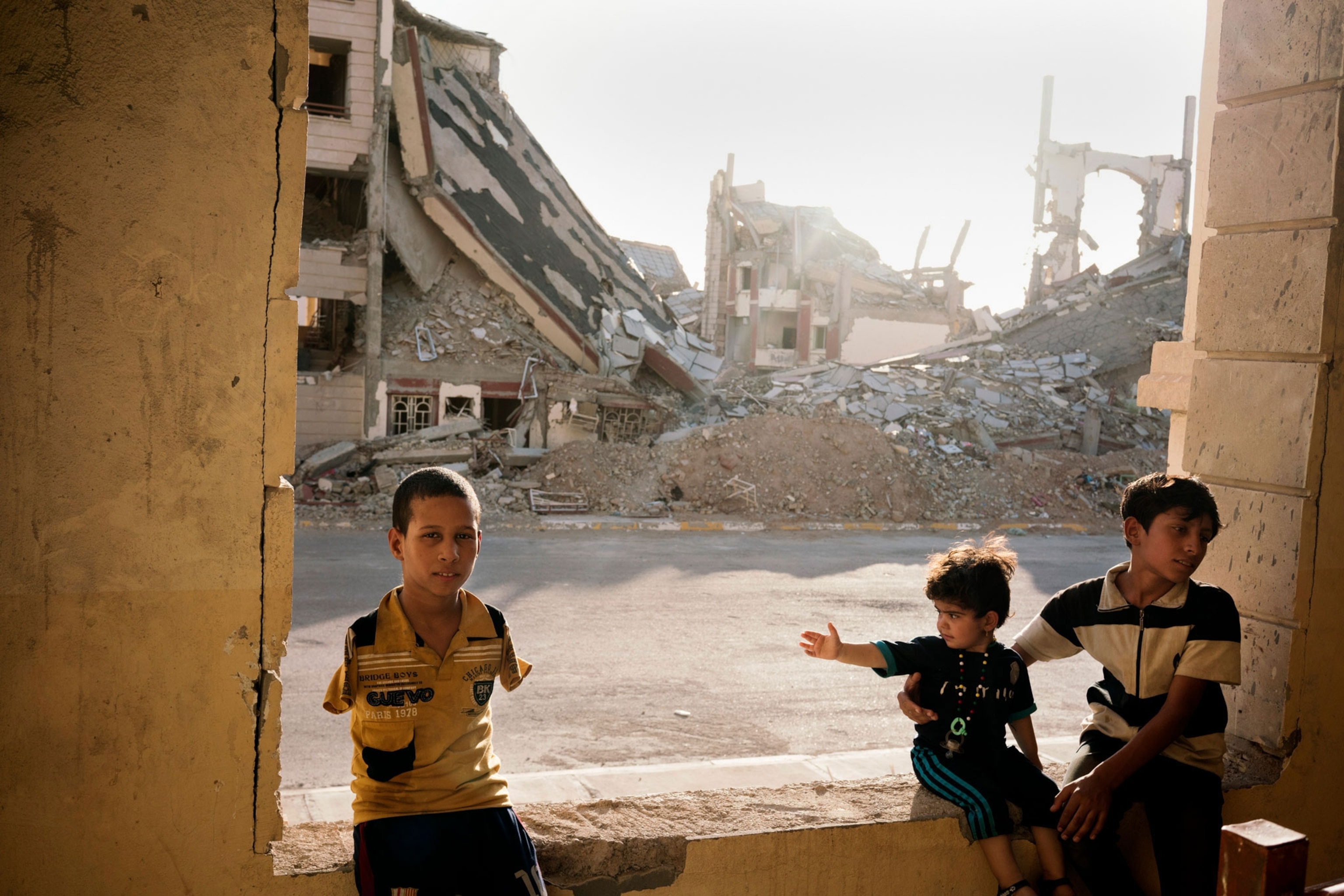
Jehan Jillani, Associate Photo Editor
A powerful photograph has to speak to me on an aesthetic and emotional level. This frame by Moises Saman does precisely that. The light is beautiful and the color palette gorgeous, but the scene itself is layered with destruction and is deeply sobering. The boy on the left—a refugee in Ramadi who should have never had to be in this situation—bravely engages with Saman’s camera, embodying the very tangible, tragic effects of conflict and the resilience that humans can produce in the aftermath.
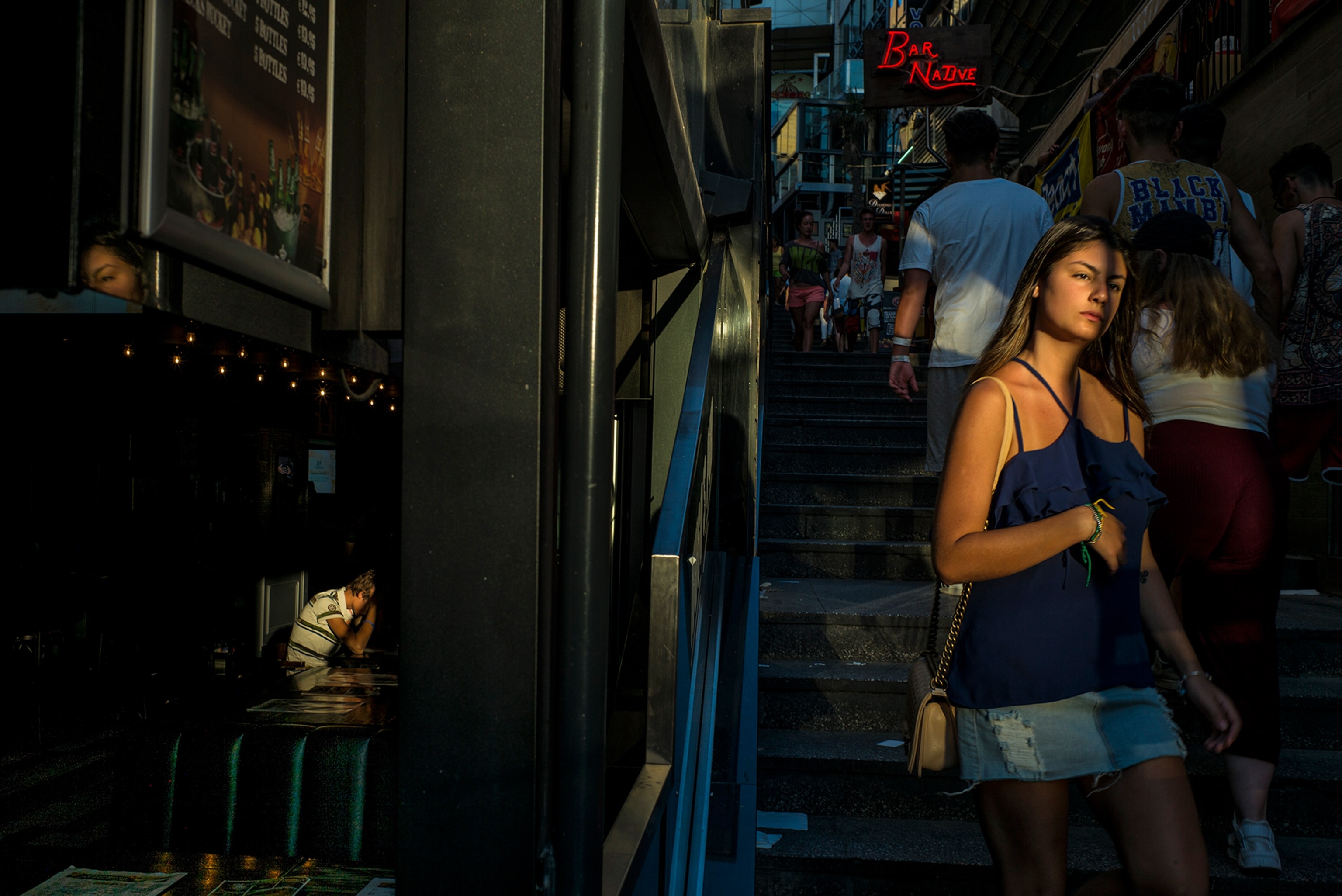
Anne Farrar, Director of Photography, Traveler
I want to be her. Wondering the streets of Malta, dreaming the day away; a sense of serenity, exploration, and romance washes across her face just as the sun beams a shaft of light through the narrow walkways of Valletta. I had the pleasure of working with photographer Alex Webb on a Travel piece covering this small island country.
Located in the middle of the Mediterranean, Malta was named the European Capital of Culture for 2018. Every image Alex shot revealed why the world should go now and drink in the culture, enjoy the crystal-clear waters, and relax on the sandy beaches. Powerful travel photography moves us beyond seeing and doing and allows each of us to dream a little. Whether we end up at that specific destination or some other, photography gives us a window and often the desire to explore beyond our front door.

Todd James, Senior Photo Editor
I love so many of the photographs that Max Aguilera-Hellweg shot for our forensic science story that it’s hard for me to single out one. But this “bite-o-matic” image is unlike anything I have ever seen. That’s exactly what I want from a science photo: A little surprise and a touch of emotion that creates a first-person sense of discovery.
These modified vice clamps, with dentures attached, are being used to create bite marks on the flesh of a dead pig. Forensic researchers are applying scientific rigor to crime-fighting craft like bite-mark analysis. It is used to convict people in court but never thoroughly tested in the lab, so use of bite-mark analysis as evidence was halted in many jurisdictions.
This may not be the most beautiful photograph in the story, but it is the one that haunts me.
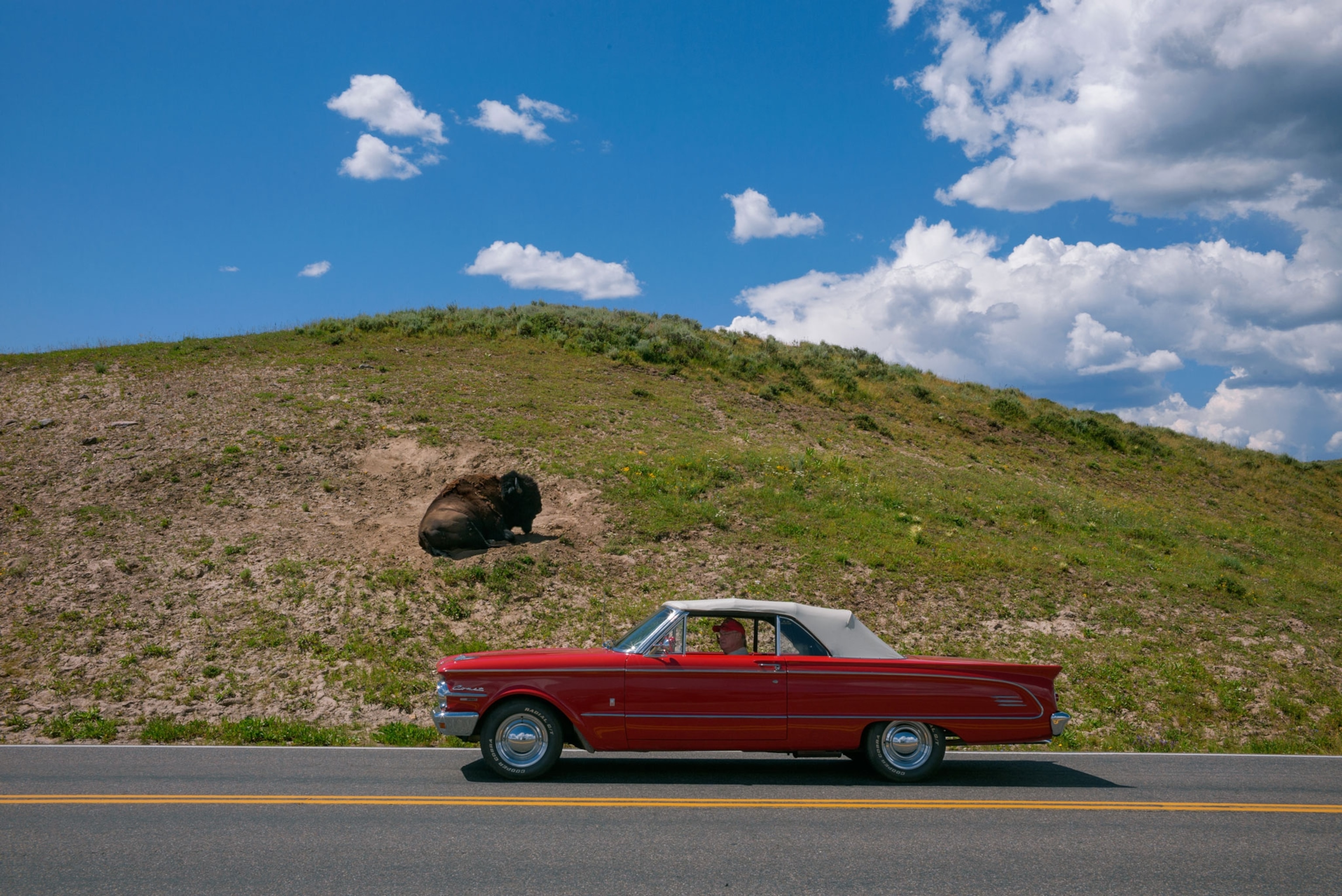
Melody Rowell, Assistant Photo Editor
I worked as a coordinator on the Yellowstone issue for a year and a half, and this is the image that will stick with me forever. Beyond the brilliant colors and the perfect composition lies a key element that every photographer works for but has limited control over: serendipity. To know that this image of two American icons was not prearranged but the result of David Guttenfelder being in the right place at the right time—well, that adds extra depth and beauty to the photo for me.
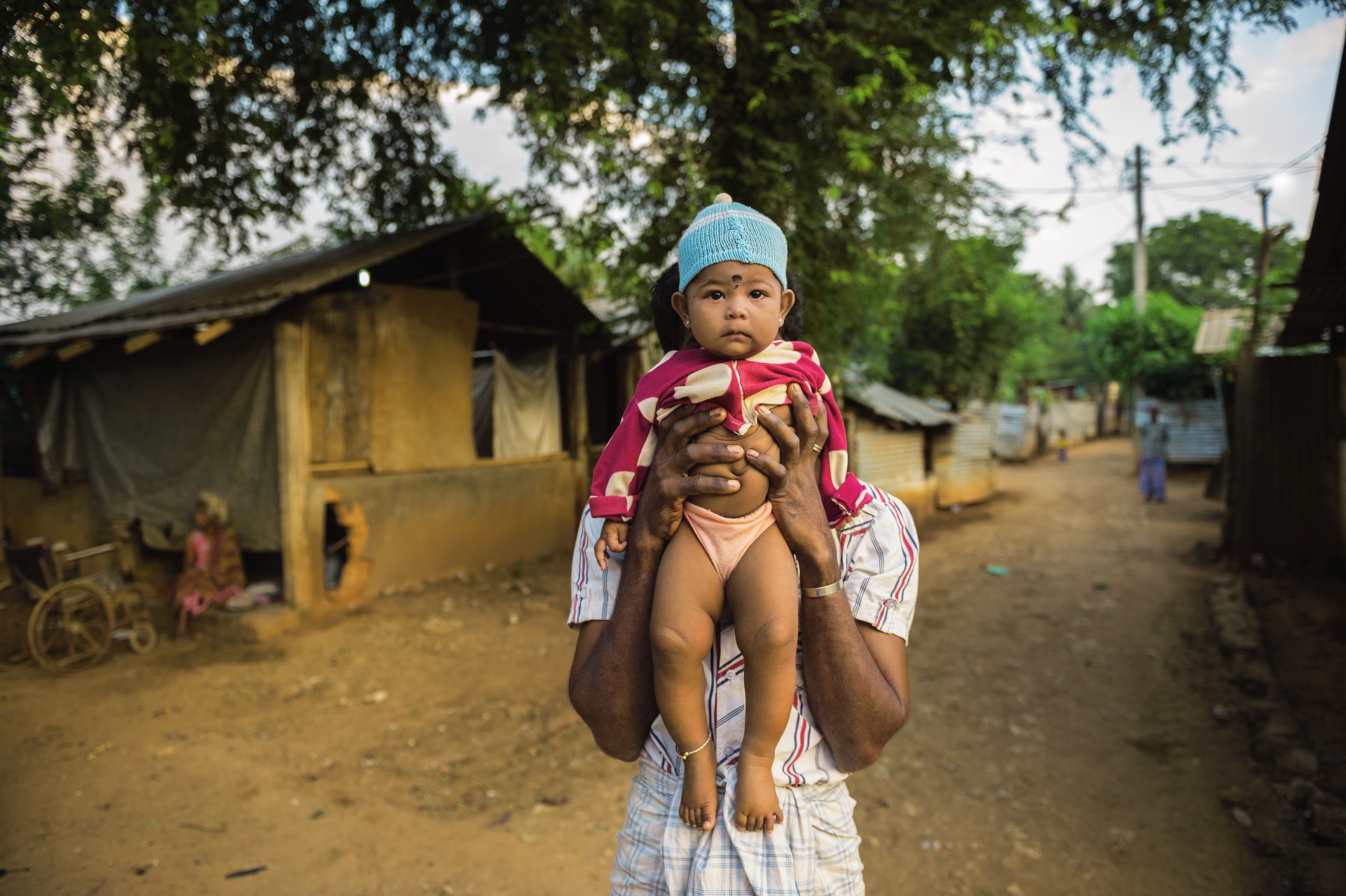
Jennifer Pritheeva Samuel, Associate Photo Editor
Every great picture moves us. This one, taken in Sri Lanka by Ami Vitale, tells a story within its frame, which is why it’s one of my favorites of the year. A man, cautiously wanting his story to be heard but too fearful to show his own face, offers that of his chubby daughter, too innocent to know the difficult life she has been born into. He and his Tamil neighbors had homes and have not been able to return to them. He is internally displaced in his own country as a result of the civil war that ravaged the country for decades. This image and story are special to me on many levels. As a first-generation American of Tamil descent, most of my family left Sri Lanka because of the same war, resettling all over the world. The sarong this man wears, the too-quiet dirt road, and galvanized metal shacks behind him are familiar. His story makes me reflect on how much can simultaneously be lost and gained in a generation, and how the broad strokes of one country’s war and another’s immigration policy can determine so much of one’s destiny.
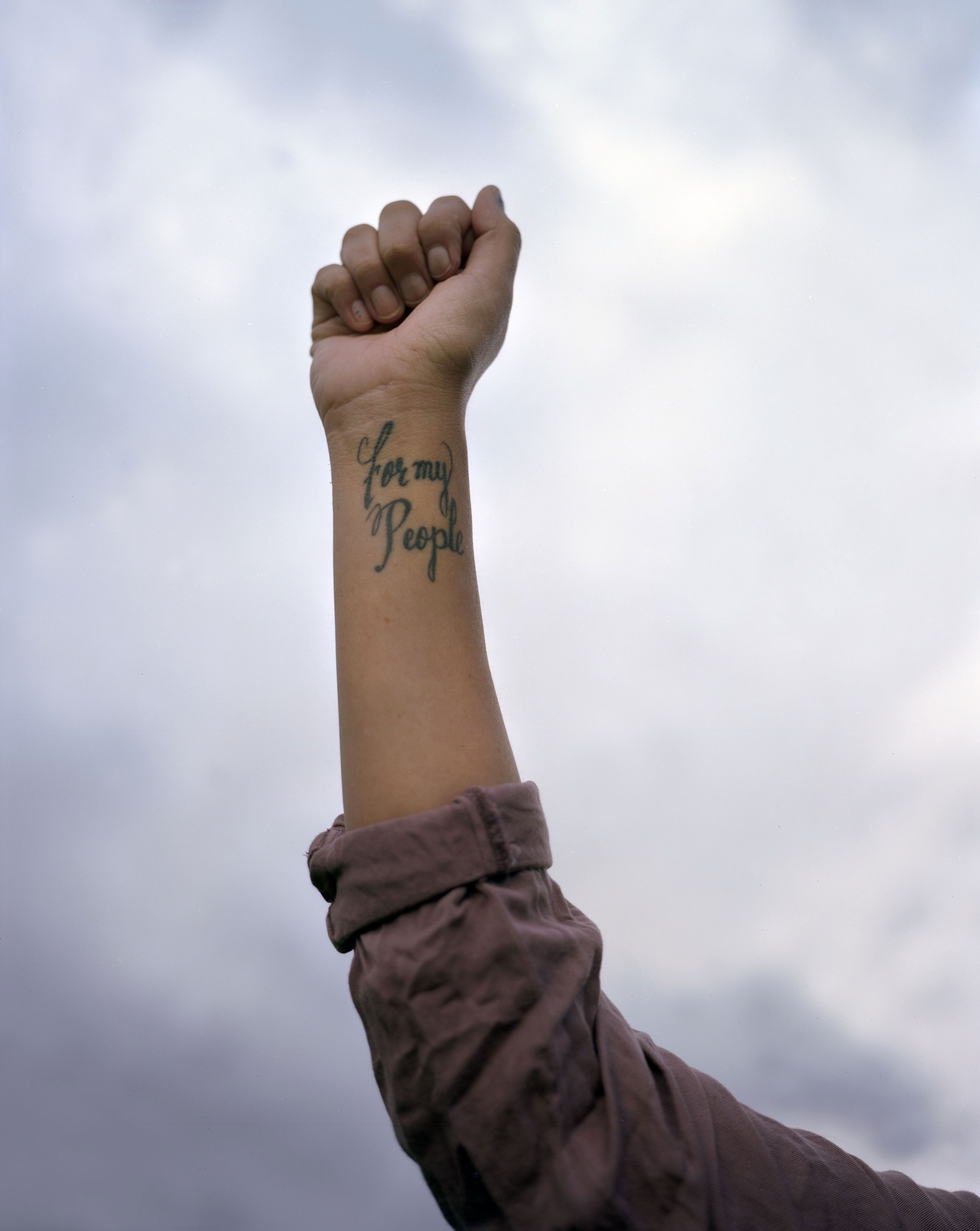
Elijah Walker, Associate Photo Editor
I love this photo by Erika Larsen from the DAPL protest because of what it represents. The fist raised in the air, the words “for my people,” and the absence of any one person’s face makes it impactful for me in a way because I think it has a universal message. It’s an abstract but still powerful and moving photograph about standing up and advocating for something you believe in, which is an important part of photography, along with documenting the truth of any situation.

Laura Emmons, Associate Photo Editor
I got chills when I first saw this frame: a grandmother looking at and seeing her grandson, perhaps for the first time as a young man, after regaining her sight. I'm drawn in by the warmth of the moment, the gazes they share of both loving recognition and pure awe. You can almost hear their laughter, feel their giddiness. The image gives a glimpse into a victory that should be easy but is out of reach for most. Cataracts are simple to treat but cause blindness in most of the developing world, where surgery is inaccessible. The photographer, Brent Stirton, captured a beautiful experience that can often be taken for granted: seeing the face of someone we love.

Monica Corcoran, Director, Your Shot
While I love this image for what it is—a spontaneous moment that makes me laugh out loud—I really love how it encapsulates 2016. The highs and lows, the unexpected twists and turns, and ultimately the ability of people to shrug it off with a laugh and carry on.

David Lee, Associate Photo Editor
Every day, I see another photo that I love. Fortunately for me, as the curator of the National Geographic Your Shot Instagram feed (@natgeoyourshot), I have the opportunity to share them with you on a daily basis. So yes, I love my job. But if I could be anywhere else right now, I would want to start off my day like Matt and Agnes Hage, waking up after a night under the stars, bundled up because it's still a little brisk, sipping my first coffee of the day, watching the sun rise over the mountains, and then this.

